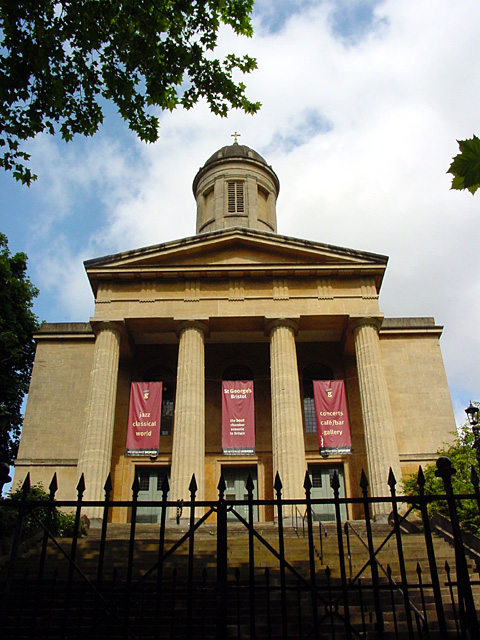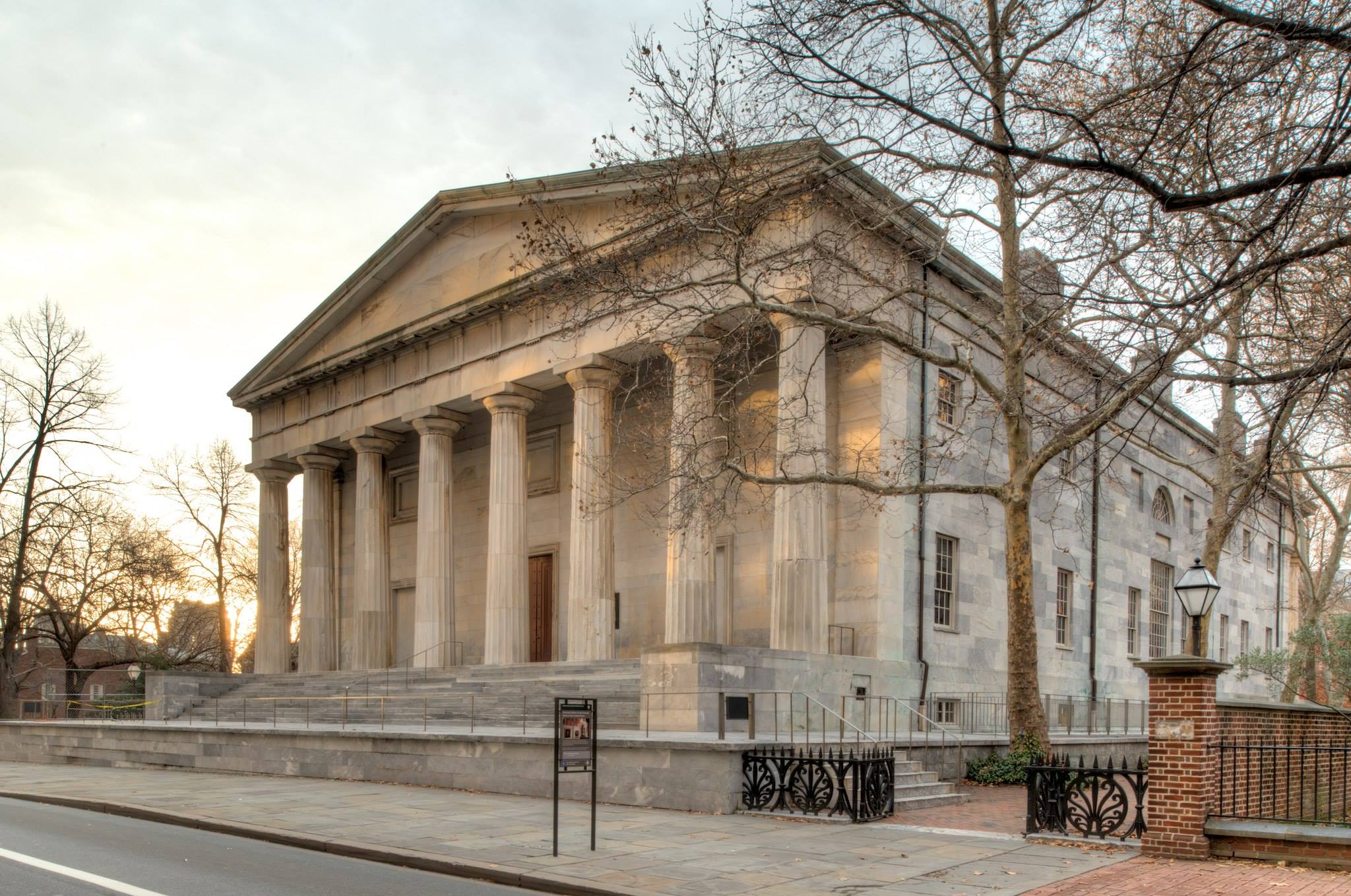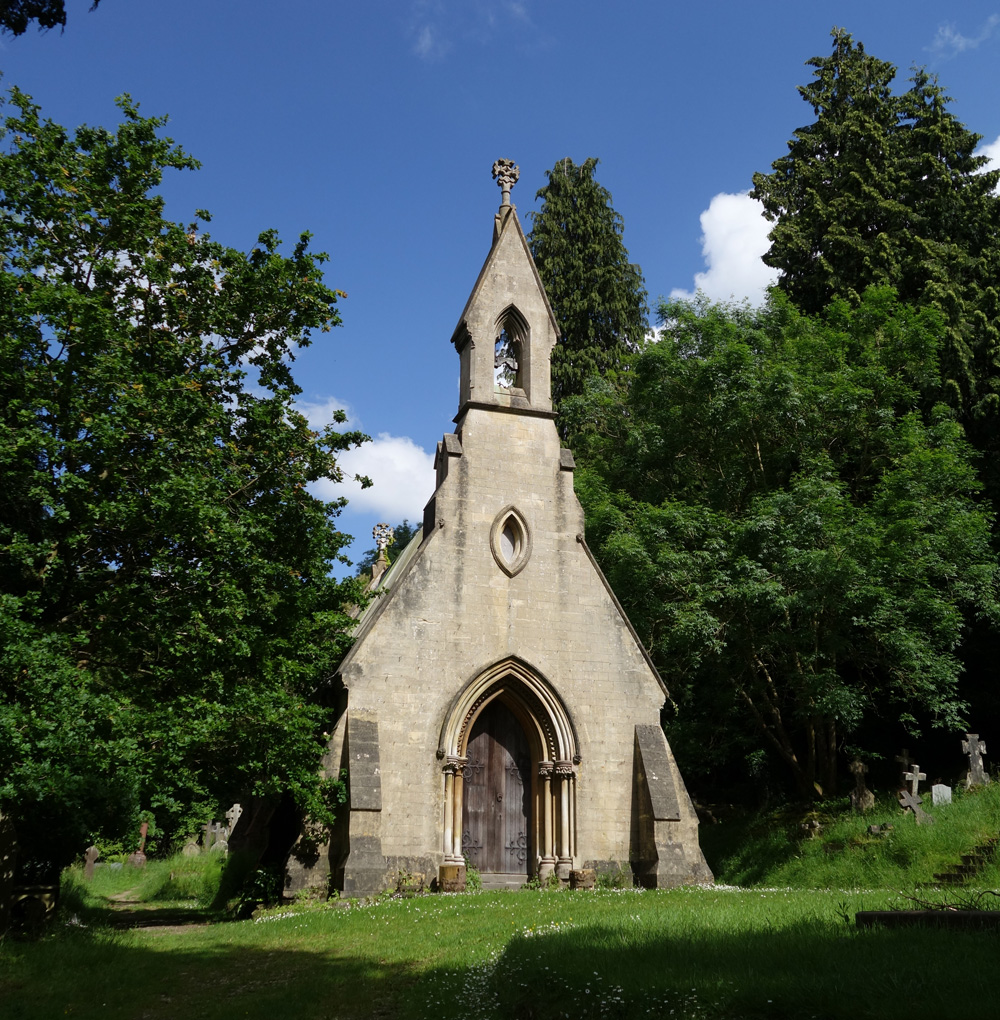|
1823 In Architecture
The year 1823 in architecture involved some significant events. Buildings and structures Buildings * Work begins on the British Museum in London, designed by Robert Smirke (later Sir Robert). * Work begins on the Altes Museum in Berlin, designed by Karl Friedrich Schinkel, which is completed in 1830. * Work completed on St George's Church, Brandon Hill in Bristol, England, designed by Robert Smirke in Greek Revival style. * Work completed on the Primary Cathedral of Bogotá, Colombia. * Work completed on the Admiralty building, Saint Petersburg designed by Andreyan Zakharov in 1806. * Work completed on the core of Massachusetts General Hospital, Bulfinch Building, designed by Charles Bulfinch. * William Strickland builds St. Stephen's Episcopal Church, Philadelphia, United States, one of the first Gothic revival buildings. Awards * Grand Prix de Rome, architecture: Félix Duban. Births * March 8 – Thomas Fuller, Canadian architect (died 1898) * July 7 – Francis Fo ... [...More Info...] [...Related Items...] OR: [Wikipedia] [Google] [Baidu] |
William Strickland (architect)
William Strickland (November 1788 – April 6, 1854), was a noted architect and civil engineer in Philadelphia, Pennsylvania, and Nashville, Tennessee. A student of Benjamin Latrobe and mentor to Thomas Ustick Walter, Strickland helped establish the Greek Revival movement in the United States. A pioneering engineer, he wrote a seminal book on railroad construction, helped build several early American railroads, and designed the first ocean breakwater in the Western Hemisphere. He was elected as a member of the American Philosophical Society in 1820. Life and career Strickland was born in the Navesink section of Middletown Township, New Jersey, and moved with his family to Philadelphia as a child. In his youth, he was a landscape painter, illustrator for periodicals, theatrical scene painter, engraver, and pioneer aquatintist. His Greek Revival designs drew much inspiration from the plates of ''The Antiquities of Athens''. Strickland and Latrobe competed to design the Second Bank ... [...More Info...] [...Related Items...] OR: [Wikipedia] [Google] [Baidu] |
1900 In Architecture
The year 1900 in architecture involved some significant events. Buildings and structures Buildings * May 30 — Daniel Burnham's Gilbert M. Simmons Memorial Library and Soldiers and Sailors Monument are dedicated together in Kenosha, Wisconsin * July 19 – The Paris Métro opens, with entrances designed by Hector Guimard in 1899. * November 11 – Church of Sant'Anselmo all'Aventino in Rome, designed by Abbot Hildebrand de Hemptinne, is consecrated. * Antoni Gaudí begins work on the Parc Güell, which he works on for the next fourteen years. * The ''Gare d'Orsay'', the modern-day Musée d'Orsay, is built in Paris by Victor Laloux. * The Joseph Chamberlain Memorial Clock Tower at the University of Birmingham, England, is completed. * The Administration Building of Southwestern University, Georgetown, Texas, designed by physicist and University President Robert Stewart Hyer, is completed. * The OXO Tower in London, England, is completed. * The Co-Operative Wholesale Society wa ... [...More Info...] [...Related Items...] OR: [Wikipedia] [Google] [Baidu] |
Charles Barry, Jr
Charles is a masculine given name predominantly found in English and French speaking countries. It is from the French form ''Charles'' of the Proto-Germanic name (in runic alphabet) or ''*karilaz'' (in Latin alphabet), whose meaning was "free man". The Old English descendant of this word was '' Ċearl'' or ''Ċeorl'', as the name of King Cearl of Mercia, that disappeared after the Norman conquest of England. The name was notably borne by Charlemagne (Charles the Great), and was at the time Latinized as ''Karolus'' (as in ''Vita Karoli Magni''), later also as '' Carolus''. Some Germanic languages, for example Dutch and German, have retained the word in two separate senses. In the particular case of Dutch, ''Karel'' refers to the given name, whereas the noun ''kerel'' means "a bloke, fellow, man". Etymology The name's etymology is a Common Germanic noun ''*karilaz'' meaning "free man", which survives in English as churl (< Old English ''ċeorl''), which developed its de ... [...More Info...] [...Related Items...] OR: [Wikipedia] [Google] [Baidu] |
John Thomas Emmett
John Thomas Emmett (18 August 1823 - 3 August 1898) was an English architect and designer based in London. Life He was born on 18 August 1823, the son of John Emmett and Mary Saunders. By 1846 he was working in practice at 11 Beaufort Buildings in London. By 1868 he was at 1 Cloudesley Square, Islington in London. In 1857 he was declared bankrupt., but by 1865 was a director of the North London, Highgate and Alexandra Park Railway. He was a devotee of the Gothic style of architecture, and unafraid to criticise his colleagues building in more contemporary styles. In 1872 he published an anonymous article in the ''Quarterly Review'' on "The state of English architecture" which drew attacks from other architects. Works *Padiham Baptist Church, Lancashire 1846. (closed 2013). *Congregational Church, Camden Road, Holloway 1846 *Barnes railway station *St Stephen’s Church, Bath Street, Renfield, Glasgow 1849 - 1852 *Derby Road Baptist Church Nottingham 1850 (demolished) *New C ... [...More Info...] [...Related Items...] OR: [Wikipedia] [Google] [Baidu] |
1880 In Architecture
The year 1880 in architecture involved some significant architectural events and new buildings. Buildings and structures Buildings * August 14 – Cologne Cathedral in Cologne, Germany, is completed after 632 years. * Berlin Anhalter Bahnhof (railway station) in Berlin, Germany, rebuilt by Franz Heinrich Schwechten, is completed. * Manchester Central railway station in Manchester, England is completed. * Royal Exhibition Building, Melbourne is completed. * Yıldız Palace, Istanbul, Turkey, is built. * Bathing Ghat, Bulandshahr, India, is completed. Awards * RIBA Royal Gold Medal – John Loughborough Pearson. * Grand Prix de Rome, architecture: Louis Girault. Births * April 1 – Louis Laybourne Smith – Australian architect (died 1965) * April 9 – Jan Letzel, Czech architect (died 1925) * May 4 – Bruno Taut, German architect and urban planner (died 1938) * May 19 – Albert Richardson, English architect, writer, and professor of architecture (died 1964) * May 25 – ... [...More Info...] [...Related Items...] OR: [Wikipedia] [Google] [Baidu] |
Indianapolis
Indianapolis (), colloquially known as Indy, is the state capital and most populous city of the U.S. state of Indiana and the seat of Marion County. According to the U.S. Census Bureau, the consolidated population of Indianapolis and Marion County was 977,203 in 2020. The "balance" population, which excludes semi-autonomous municipalities in Marion County, was 887,642. It is the 15th most populous city in the U.S., the third-most populous city in the Midwest, after Chicago and Columbus, Ohio, and the fourth-most populous state capital after Phoenix, Arizona, Austin, Texas, and Columbus. The Indianapolis metropolitan area is the 33rd most populous metropolitan statistical area in the U.S., with 2,111,040 residents. Its combined statistical area ranks 28th, with a population of 2,431,361. Indianapolis covers , making it the 18th largest city by land area in the U.S. Indigenous peoples inhabited the area dating to as early as 10,000 BC. In 1818, the Lenape relinquished their ... [...More Info...] [...Related Items...] OR: [Wikipedia] [Google] [Baidu] |
Edwin May (architect)
Edwin May (1823 - 1880) was an American architect based in Indianapolis, Indiana. He designed several county courthouses, the Indiana State House and other public hospital and school buildings, including the Horace Mann Public School No. 13. ''Note:'' This includes He also received patents for his fireproofing designs. During the construction of his final project, the Indiana State House, he became paralyzed, traveled to Jacksonville, Florida to recover and died. Adolph Scherrer took over the project. He was born in Boston, Massachusetts Massachusetts (Massachusett language, Massachusett: ''Muhsachuweesut assachusett writing systems, məhswatʃəwiːsət'' English: , ), officially the Commonwealth of Massachusetts, is the most populous U.S. state, state in the New England ....The Encyclopedia of Indianapolis< ... [...More Info...] [...Related Items...] OR: [Wikipedia] [Google] [Baidu] |
1865 In Architecture
The year 1865 in architecture involved some significant architectural events and new buildings. Events * George Gilbert Scott wins the competition to design the St Pancras railway station hotel and buildings in London. Buildings and structures Buildings completed * Amhuinnsuidhe Castle, Harris, Scotland, built for Charles Murray, 7th Earl of Dunmore, by David Bryce. In 2003 Amhuinnsuidhe Castle Estate purchases the castle (and its fishing rights). * Cefn Coed Viaduct, Wales, designed by Alexander Sutherland and Henry Conybeare. * Government House, Brisbane, Australia, designed by Benjamin Backhouse. * Bataclan theatre in Paris, designed by Charles Duval. * Iron-framed shipping warehouses at Saint-Ouen in Paris, designed by engineer Hippolyte Fontaine. * Crossness Pumping Station, serving the London sewage system, designed by engineer Joseph Bazalgette and architect Charles Henry Driver. * Stowford and Magnolia Cottages, Stowford, Cheshire, England, designed by William Ede ... [...More Info...] [...Related Items...] OR: [Wikipedia] [Google] [Baidu] |
Francis Fowke
Francis Fowke (7 July 1823 – 4 December 1865) was an Irish engineer and architect, and a captain in the Corps of Royal Engineers. Most of his architectural work was executed in the Renaissance style, although he made use of relatively new technologies to create iron framed buildings, with large open galleries and spaces. Fowke was born in Ballysillan, Belfast. He studied at The Royal School Dungannon, County Tyrone, and the Royal Military Academy, Woolwich. He obtained a commission in the Royal Engineers, and served with distinction in Bermuda and Paris. On his return to England, he was appointed architect and engineer in charge of the construction of several government buildings. Among his projects were the Prince Consort's Library in Aldershot, the Royal Albert Hall and parts of the Victoria and Albert Museum in London, the Industrial Museum of Scotland (Edinburgh Museum of Science and Art) in Edinburgh, and the National Gallery of Ireland in Dublin. He was also respo ... [...More Info...] [...Related Items...] OR: [Wikipedia] [Google] [Baidu] |
1898 In Architecture
Events January–March * January 1 – New York City annexes land from surrounding counties, creating the City of Greater New York as the world's second largest. The city is geographically divided into five boroughs: Manhattan, Brooklyn, Queens, The Bronx and Staten Island. * January 13 – Novelist Émile Zola's open letter to the President of the French Republic on the Dreyfus affair, ''J'Accuse…!'', is published on the front page of the Paris daily newspaper ''L'Aurore'', accusing the government of wrongfully imprisoning Alfred Dreyfus and of antisemitism. * February 12 – The automobile belonging to Henry Lindfield of Brighton rolls out of control down a hill in Purley, London, England, and hits a tree; thus he becomes the world's first fatality from an automobile accident on a public highway. * February 15 – Spanish–American War: The USS ''Maine'' explodes and sinks in Havana Harbor, Cuba, for reasons never fully established, killing 2 ... [...More Info...] [...Related Items...] OR: [Wikipedia] [Google] [Baidu] |
Thomas Fuller (architect)
Thomas Fuller (March 8, 1823 – September 28, 1898) was an English-born Canadian architect. From 1881 to 1896, he was Chief Dominion Architect for the Government of Canada, during which time he played a role in the design and construction of every major federal building. Fuller was born in Bath, Somerset, England, where he trained as an architect. While living in Bath and London, he did a number of projects. In 1845, he left for Antigua, where he spent two years working on the new St John's Cathedral, before emigrating to Canada in 1857. Settling in Toronto, he formed a partnership with Chilion Jones with Fuller responsible for design work. The company first won the contract to design the Church of St. Stephen-in-the-Fields. In 1859, The Legislative Assembly in Ottawa voted the sum of £75,000 for the erection of a "Parliament House" and offered a premium of $1000 for the best design within that budget. The winning bid was made by Fuller and Jones for a Neo-Gothi ... [...More Info...] [...Related Items...] OR: [Wikipedia] [Google] [Baidu] |







